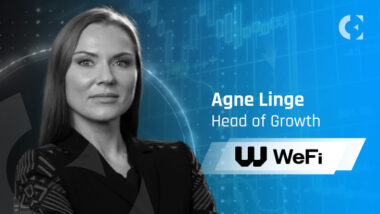Empowering the Unbanked: How Blockchain Technology Serves Billions Left Out of Traditional Finance

Over a billion people worldwide lack access to basic financial services, particularly in developing countries — but these emerging markets, neglected by traditional financial systems, hold immense potential for those offering an alternative approach. Agne Linge, Head of Growth at WeFi, the world’s first non-custodial neobank, explains how blockchain technology, merged with AI, brings financial power back to the people through self-custody, algorithmic identification, and instant remittances.
- Billions of people remain unbanked globally. Why did banks fail to create conditions allowing the underbanked to access them? Shouldn’t serving all these people bring considerable profits to banks?
The reality is that over 1.5 billion people around the world are still unbanked, mostly in regions like South Asia, Latin America, Africa, and the Middle East. Traditional financial systems were built to serve customers who bring profits, often focusing on wealthy Western nations while sidelining others. The current banking model prioritizes profit over accessibility, catering to those who fit into the existing framework — like people with stable corporate jobs who can take o…
The post Empowering the Unbanked: How Blockchain Technology Serves Billions Left Out of Traditional Finance appeared first on Coin Edition.
Read More

All you wanted to know from web3 developer, but hesitated to ask
Empowering the Unbanked: How Blockchain Technology Serves Billions Left Out of Traditional Finance

Over a billion people worldwide lack access to basic financial services, particularly in developing countries — but these emerging markets, neglected by traditional financial systems, hold immense potential for those offering an alternative approach. Agne Linge, Head of Growth at WeFi, the world’s first non-custodial neobank, explains how blockchain technology, merged with AI, brings financial power back to the people through self-custody, algorithmic identification, and instant remittances.
- Billions of people remain unbanked globally. Why did banks fail to create conditions allowing the underbanked to access them? Shouldn’t serving all these people bring considerable profits to banks?
The reality is that over 1.5 billion people around the world are still unbanked, mostly in regions like South Asia, Latin America, Africa, and the Middle East. Traditional financial systems were built to serve customers who bring profits, often focusing on wealthy Western nations while sidelining others. The current banking model prioritizes profit over accessibility, catering to those who fit into the existing framework — like people with stable corporate jobs who can take o…
The post Empowering the Unbanked: How Blockchain Technology Serves Billions Left Out of Traditional Finance appeared first on Coin Edition.
Read More

